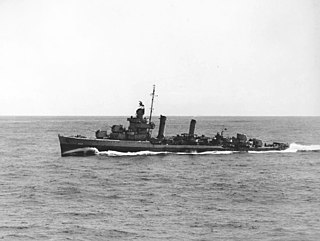Luzon is the largest island in the Philippines. Luzon may also refer to:
Bush commonly refers to:
Chesapeake often refers to:

Corregidor Island is an island located at the entrance of Manila Bay in the southwestern part of Luzon in the Philippines. Due to this location, Corregidor has historically been fortified with coastal artillery batteries to defend the entrance of Manila Bay and Manila itself from attacks by enemy warships. Located 48 kilometres (30 mi) inland, Manila is the largest city and the most important seaport in the Philippines for centuries, from the colonial rule of Spain, Japan, and the United States, up until the establishment of the Third Philippine Republic in 1946.
Savo may refer to:

Thomas Hinman Moorer was an admiral and naval aviator in the United States Navy who served as the chief of Naval Operations from 1967 to 1970, and as the seventh chairman of the Joint Chiefs of Staff from 1970 to 1974.

The Philippines campaign, also known as the Battle of the Philippines or the Fall of the Philippines, was from December 8, 1941, to May 8, 1942, the invasion of the Philippines by the Empire of Japan and the defense of the islands by United States and the Philippine Armies during World War II.

USS Swanson (DD-443) was a Gleaves-class destroyer of the United States Navy, named for Secretary of the Navy Claude A. Swanson (1862–1939).

USS Boyd (DD-544) was a Fletcher-class destroyer of the United States Navy.

USS Brown (DD-546) was a Fletcher-class destroyer of the United States Navy, named for George Brown, a seaman on the crew of USS Intrepid during the raid that destroyed the captured USS Philadelphia in Tripoli harbor during the First Barbary War. Entering service in 1943 during World War II, the ship saw active service until 1962 when she was decommissioned and sold to Greece. Renamed Navarinon, the destroyer was active until 1981 when she was sold for scrap.

The Invasion of Lingayen Gulf, 6–9 January 1945, was an Allied amphibious operation in the Philippines during World War II. In the early morning of 6 January 1945, a large Allied force commanded by Admiral Jesse B. Oldendorf began approaching the shores of Lingayen from Lingayen Gulf, on the island of Luzon, the largest and Northernmost island in the Philippine archipelago island chain. U.S. Navy and Royal Australian Navy warships began bombarding suspected Japanese positions along the coast of Lingayen from their position in Lingayen Gulf for three days. On "S-Day", 9 January, the U.S. 6th Army landed on a roughly 25 mi (40 km) beachhead at the base of the Gulf between the towns of Lingayen and San Fabian.

Strike Fighter Squadron 115 (VFA-115) is known as the "Eagles", callsign "Talon", a United States Navy F/A-18E Super Hornet strike fighter squadron stationed at Marine Corps Air Station Iwakuni. Their tail code is NF. It was established as Torpedo Squadron VT-11 on 10 October 1942, redesignated VA-12A on 15 November 1946, VA-115 on 15 July 1948, then finally VFA-115.
Bougainville may refer to:

The second USS Sanders (DE-40) was an Evarts class destroyer escort constructed for the United States Navy during World War II. She was sent to the Pacific Ocean to protect convoys and other shipping from Japanese submarines and fighter aircraft. She performed dangerous work in major battle areas and was awarded four battle stars.

USS Key (DE-348) was a John C. Butler-class destroyer escort in service with the United States Navy from 1944 to 1946. She was scrapped in 1972.

USS Rombach (DE-364) was a John C. Butler-class destroyer escort acquired by the U.S. Navy during World War II. The primary purpose of the destroyer escort was to escort and protect ships in convoy, in addition to other tasks as assigned, such as patrol or radar picket.

USS Day (DE-225) was a Rudderow-class destroyer escort in the United States Navy during World War II.

USS Burlington (PF-51) was a Tacoma-class frigate in commission from 1944 to 1945 and from 1951 to 1952, the only United States Navy ship thus far to have been named for Burlington, Iowa. She also served in the Soviet Navy as EK-21 and in the Colombian National Armada as ARC Almirante Brión.
Haida may refer to:

The Xanthus-class repair ships were a class of five auxiliary ships built for the United States Navy and Royal Navy. Ships of the class served in a diverse range of environments in varying capacities during both World War II and the Korean War. Xanthus-class ships were in commission between 1945–1955.

Attack Squadron 35 (VA-35) was an aviation unit of the United States Navy. The squadron's nickname is unknown. Its insignia, a winged dragon, was revised several times during its lifetime. The squadron was first established as Torpedo and Bombing Squadron 2 (VT-2) on 6 July 1925, and was redesignated as VT-2B on 1 July 1927, VT-3 on 1 July 1937, VA-4A on 15 November 1946, and, finally, VA-35 on 7 August 1948. The squadron was disestablished on 7 November 1949. It was the first squadron to carry the VA-35 designation, the second VA-35 was redesignated from VA-34 on 15 February 1950 and disestablished on 31 January 1995.